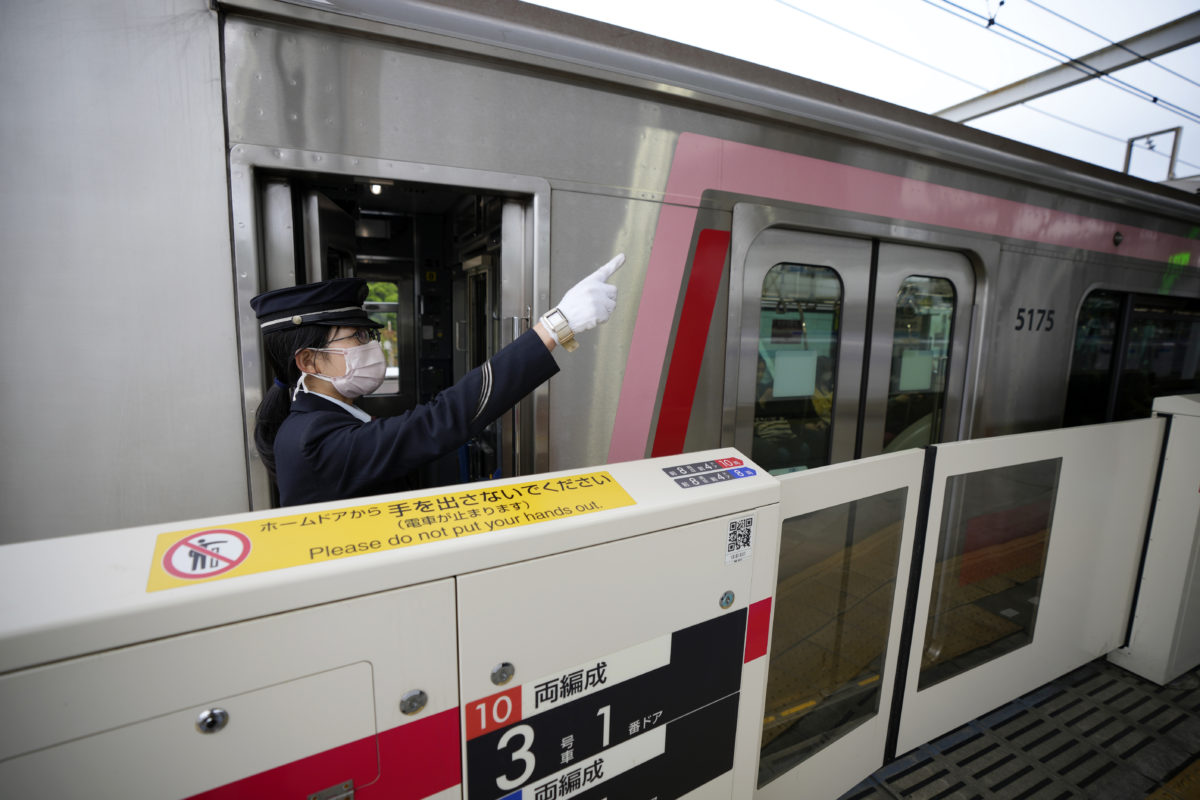Japanese Railway Operator ‘Tokyu’ Now Runs Fully On Renewable Energy
The crossing in Shibuya is extremely recognizable. Here, crowds of people cross the intersection in an image that symbolizes urban Japan’s anonymity and congestion. You might have another reason to be proud.
Tokyu Railways’ trains that ran through Shibuya or other stations switched to solar power on April 1.

A woman conductor is seen at Tokyu Railways’ Tamagawa Station Wednesday, April 20, 2022, in Tokyo. A Japanese railway company, Tokyu, says it now uses just solar and other renewable energy to power its sprawling train service. That means the emissions of carbon dioxide for its network of seven train lines and one tram service stand at zero starting April 1. (AP Photo/Eugene Hoshiko)
This means that Tokyu’s vast network of seven trains and one tram service has reduced its carbon dioxide emissions to zero. Network stations, vending machines, CCTVs, and lighting all are operating on green energy.
Tokyu, which has 3,855 employees and links Tokyo with Yokohama, is the first Japanese railroad operator to achieve this goal. According to Tokyu, the carbon dioxide reduction achieved equals the annual average emissions from 56,000 Japanese households.
Tokyu’s railway technology is one of the most environmentally friendly. Secondary options are hydrogen power and batteries.
Is it just a publicity stunt, or are Tokyu’s intentions real?
Ryo Takagi is a Kogakuin University professor and specialist in electric railroad systems. According to him, technology is quite complicated and is dependent on many uncertainties.
However, Tokyu’s efforts are better than doing nothing, and it certainly doesn’t hurt anyone. Their commitment to green energy is commendable.
Takagi stated, “But I’m not going to go out of my way to praise it as great.”
A poster of Tokyu’s renewable sources policy is seen as passengers go through the ticket gates at Tokyu RailwaysÅf Shibuya Station Wednesday, April 20, 2022, in Tokyo. A Japanese railway company, Tokyu, says it now uses just solar and other renewable energy to power its sprawling train service. That means the emissions of carbon dioxide for its network of seven train lines and one tram service stand at zero starting April 1. (AP Photo/Eugene Hoshiko)
He adds that in rural areas, hydrogen-powered trains and electric cars would provide more notable gains. Tokyo Electric Power Co. received an undisclosed sum for certification and vouching for Tokyu’s use of renewable energy sources.
“We don’t consider this to be reaching our goal, but just a beginning,” Yoshimasa Kitano, Assistant Manager at Tokyu’s Headquarters, says. She can be found just a few steps from Scramble Crossing.
These steps are essential for Japan, which is the sixth-largest carbon emitter globally, to reach its goal of becoming carbon neutral by 2050.
Source: PBS
Also read about Japan’s First Apartment To Run Only On Renewable Energy To Be Built By 2024
